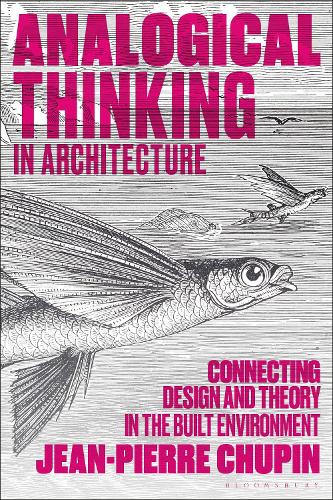
Analogical Thinking in Architecture: Connecting Design and Theory in the Built Environment
(Paperback)
Available Formats
Publishing Details
Analogical Thinking in Architecture: Connecting Design and Theory in the Built Environment
By (Author) Dr Jean-Pierre Chupin
Bloomsbury Publishing PLC
Bloomsbury Visual Arts
12th December 2024
United Kingdom
Classifications
Professional and Scholarly
Non Fiction
Architectural structure and design
720.1
Physical Properties
Paperback
256
Width 156mm, Height 230mm, Spine 16mm
550g
Description
This book provides an in-depth exploration of the rich and persistent use of analogical thinking in the built environment. Since the turn of the 21st century, design thinking has permeated many fields outside of the design disciplines. It is expected to succeed whenever disciplinary boundaries need to be transcended in order to think outside the box. This book argues that these qualities have long been supported by analogical thinkingan agile way of reasoning in which we think the unknown through the familiar. The book is organized into four case studies: the first reviews analogical models that have been at the heart of design thinking representations from the 1960s to the present day; the second investigates the staying power of biological analogies; the third explores the paradoxical imaginary of "analogous cities" as a means of integrating contemporary architecture with heritage contexts; while the fourth unpacks the critical and theoretical potential of linguistic metaphors and visual comparisons in architectural discourse. Comparing views on the role of analogies and metaphors by prominent voices in architecture and related disciplines from the 17th century to the present, the book shows how the analogical world of the project is revealed as a wide-open field of creative and cognitive interactions. These visual and textual operations are explained through 36 analogical plates which can be read as an inter-text, demonstrating how analogy has the power to reconcile design and theories.
Reviews
Analogical Thinking in Architecture is careful and timely study of analogy as a powerful tool for connecting design and theory in the built environment. Covering large grounds of theory and practice, Jean-Pierre Chupin makes a compelling argument about the potential of analogical thinking to renew the epistemological horizons of architectural theory and to contribute to a better understanding of contemporary design practice. Eloquently written and filled with insightful examples, it is a must-read for every architecture student, design educator and practitioner. * Albena Yaneva, University of Manchester, UK *
One of the foremost specialists of analogy, this fundamental dimension of architectural thinking, gives us an expanded English version of his seminal contribution to the study of a topic of interest both to theorists and practitioners. Indeed, analogy is key to the understanding of architectural creativity. * Antoine Picon, Harvard Graduate School of Design, USA *
In four chapters, Jean-Pierre Chupin takes us on an intellectual and sensory journey, reviewing key moments in Western architectural theory and history and illuminating modes of thought that remain little explored in the discipline. Chupin argues persuasively that analogical thinking, in all its intellectual and poetic manifestations, needs to be further explored given the powerful capabilities it has always brought to the field. Building on the disciplinary and transdisciplinary strengths of architecture itself and across disciplines, Chupin foregrounds the specific modes of knowledge production in creative fields and offers this book as a first milestone on the road to "opening up a field of research that favors the creation of an architectural theory of projects understood as analog worlds. Analogical Thinking in Architecture is a must-read for scholars and practitioners alike. * Dieter Dietz, EPFL Lausanne, Switzerland *
Author Bio
Jean-Pierre Chupin is a professor at the Universit de Montral School of Architecture, where he holds the Canada Research Chair in Architecture, Competitions and Mediations of Excellence.
